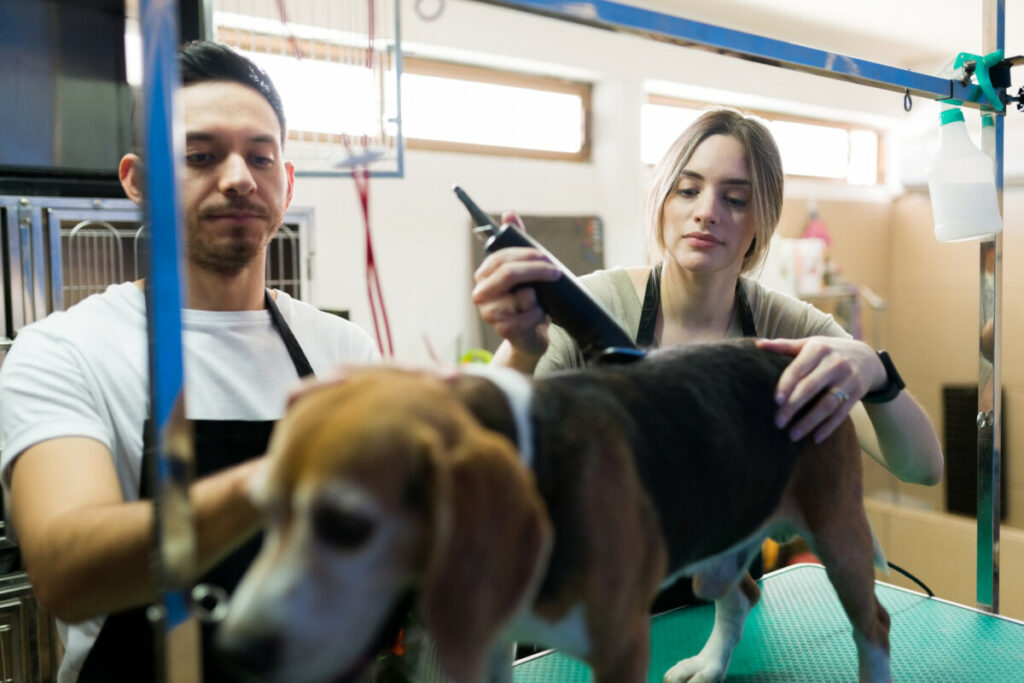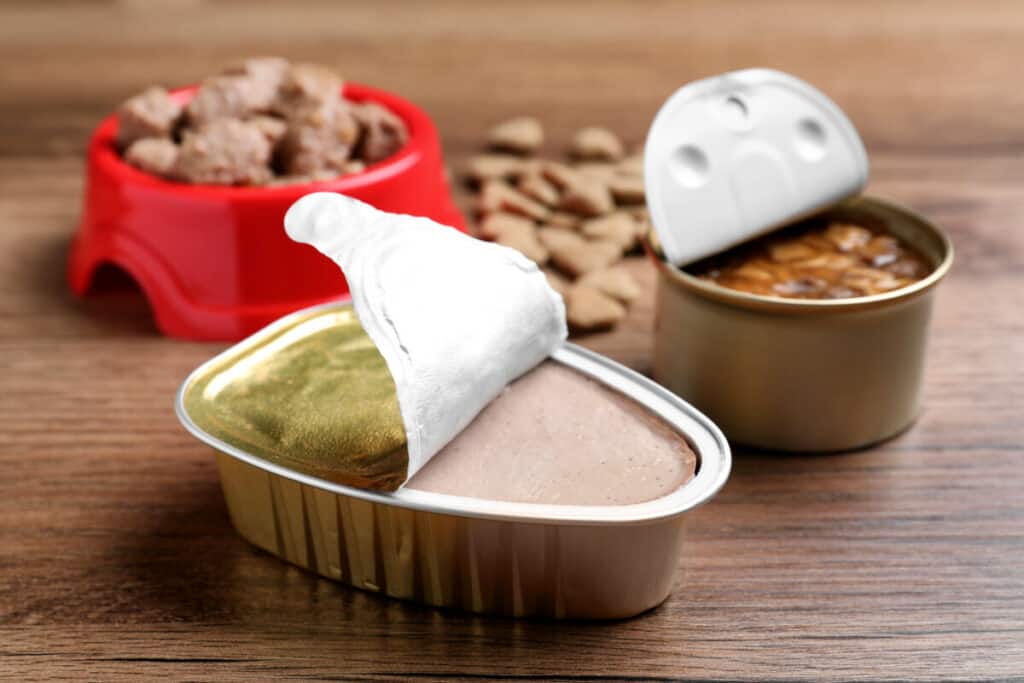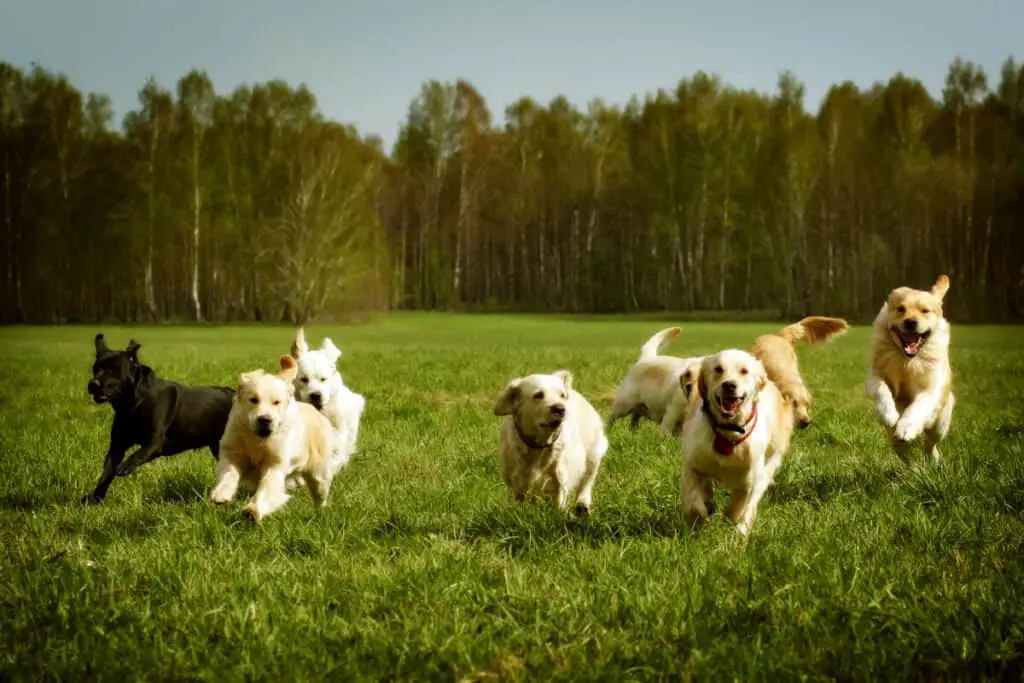
Dogs are a human’s best friend. And as our best friends, we want to take care of them to the best of our abilities. It’s important to be educated and informed on things that are important when it comes to taking care of a dog. In some circumstances, dogs have to have their coat shaved (or accidentally shaved by accident at the groomers), but how long does it take to grow back?
Dog fur can take 6 to 30 weeks to grow back entirely after shaving and/or mange. Mange can affect growth, length, and thickness, and oils and topical treatments are not beneficial to keeping dogs healthy and safe. Hair that is shaved with no underlying condition will grow back more quickly.
In this post, I explain further about what affects hair growth and regrowth, how fur grows back after mange, and how coat types affect the regrowth timeline.
Keep reading to find out what you need to know about fur in order to keep you and your dog happy. We have all the know-how and tips, and tricks.
I also included a timeline for hair growth that shows steps of hair regrowth and what to look for when your dog’s hair is growing back.
What affects dog hair growth and regrowth?

After shaving a dog, its fur will grow back just like human hair. Timelines vary depending on many variables, which I will go over below.
Typically fur grows back in 6 weeks but can take up to 30 weeks and goes through 4 stages.
The 4 stages are;
- Anagen
- Catagen
- Telogen
- Exogen
In some cases, it can take a few months.
Factors that affect regrowth are;
- food and diet
- length of fur
- breed of dog
- time of year
Being educated on your dog’s hair can really make a difference in the care you give your dog. You can make sure it is happy and healthy year-round.
How diet affects dog hair regrowth
When it comes to food, Selenium is a vital part of a dog’s diet, and it’s super important for hair growth.
Growing hair back can be challenging if your dog’s food does not have the necessary vitamins and minerals. Dogs need vitamins, just like you and I.
Some things to keep in mind when shopping for dog food are to look for kinds with high-fat content, are high in protein, have easy digestibility, and have high levels of nutrients.
Zinc, Omega-6, and Omega-3 are the best vitamins to have for hair regrowth. All of these can help your dog regrow its shiny and healthy coat in no time.
Hair length will impact the full regrowth timeline
Dogs with short hair and long hair will always have different grow-back rates. Dogs with longer hair tend to take more time when growing back fur, but it will most likely come back.
It might take a few weeks to start noticing, but it will eventually grow back to the way it was, maybe with some small differences. Sometimes shaving your dog can change the makeup of its fur. Some people see a dullness, or it becomes wiry. Dogs with short hair take less amount of time.
You can do a few things to speed up the process of hair growth. Brushing your dog regularly can stimulate hair growth. It can also keep coats healthy and shiny.
Did you know that dogs can get hairballs? I didn’t know until my dog had one! To learn more about what to look for and which dogs are more prone, I linked a post I wrote below that is very helpful!
Read Now: Dog Hairballs; Are Certain Dogs More Prone? What To Look For
Different dog breeds have different cycles of hair regrowth
Another factor in dog hair is the breed of dog. This kind of relates back to the length of the fur. Every breed has its own cycle when it comes to growing hair back.
Dogs can also have two different kinds of fur, fur and hair; some can even have both. There is a rumour that breeds with two coats don’t respond well to shaving, but this isn’t true.
I have a friend who has a Goldendoodle with two coats, and we shave him all the time due to the hot weather in Arizona. Each time his hair grows back perfectly fine, and he’s able to keep cool. It can be super important to give your dog a haircut if there is hot weather or if it’s shedding season.
However, where I live in Canada, that may not work as well, as the heat does not last as long as in Arizona.
When I had my Siberian Huskies, we never even thought about shaving them because their coats actually help them keep cool in our summer here.
I wrote a post which is linked below, about how hair affects the temperature of your dog and how different coat properties can change how warm/cool a dog stays.
Read Now: How Hair Keeps Dogs Cool; Does Length and Colour Matter?
Again it varies so much between dog breeds and climates.
If you are thinking of shaving your dog, it is best to speak with your veterinarian or groomer. They will know best through their expertise and years of experience. They will know if it will be beneficial to shave your dog.
Older dogs with two coats might not grow back hair as well after shaving, but if it means they are comfortable, it is worth it.
Some breeds that have two coats are;
- Labs
- German Shepards
- Siberian Huskies
- Border Collies
Some breeds with one coat are;
- Poodles
- Chihuahuas
- Boxers
Time of year; shedding cycles impact hair regrowth
Dogs’ hair really revolves around the season of the year. Dogs with big thick coats tend to shed a lot when it’s warm, and with good reason.
They need to keep cool, so giving them a shave when it’s warm might be a good idea. However, you need to be careful. Some dogs use their fur to keep cool, and they have a double coat that, if shaved, can do more harm than good.
I wrote a post I linked below about seasonal shedding, including a chart detailing when dogs will start their heavier shedding season in both the northern and southern hemispheres.
Read Now: Seasonal Shedding; Why Do Dogs Shed More in the Summer?
Again, if you are ever wondering if it is okay to shave or trim your dog’s hair, it is best to check with your veterinarian! They will know the specific breed you have and what is best for your furry friend!
Others shed all year long. Most dogs grow hair quickly in the Fall and then lose it in the Spring. So you might see some irregularities when you shave your dog at different times of the year.
Does dog fur grow back after mange?
Mange is an unfortunate condition that can easily spread between animals (and can even spread to humans depending on the type of mite causing the mange).
Dog hair and fur will grow back after mange unless scar tissue has formed and the hair follicle is damaged. After mange, it could take 6 to 30 weeks for the dog fur to grow back fully. Health, age, dog breed, and shedding seasons can impact the fur regrowth timeline.
Demodectic mange is caused by the mites that already naturally live on the dog’s skin and are passed from mother dog to puppy. The immune system is usually strong enough to keep it in check. But, as the dog ages, the immune system may decline enough that it cannot defend against demodectic mange.
If you ever see small patches of hair/fur loss on your dog, it should be seen by a vet as soon as possible.
If your dog has mange, the mange needs to be dealt with for the hair to grow back.
My friend’s dog has dealt with mange and matting in the past, but his fur grows back to like new after they got him shaved. However, if the case is serious enough and scar tissue forms, the fur may not grow back either. Mange can be harmful so take it seriously!
Mange mites can make matters even worse, so if your dog has mange, get them groomed as soon as possible. Mites can create irritation, skin problems, and hair loss. Mange has a lot of negative side effects, so keep a close eye on your dog’s fur.
Again, please see a veterinarian. Newer isoxazoline medications make treating and preventing mange much easier and will help control it more quickly.
Does coconut oil help dog hair grow back?

Coconut oil does not help dog hair grow back. This is a controversial topic because not many studies have been done on this.
Some people choose to use oil on their dogs, but there are so many negative side effects to doing so. While oils and treatments can be helpful for human hair, we suggest not putting coconut oil on your dog.
It won’t make their hair shinier or fix skin problems. Again if you are finding there are issues with your furry friend’s coat and/or skin, it is best to get guidance from a veterinarian.
There have not been any studies done on people who treat their dog’s skin problems with coconut oil all the time, but it can actually be harmful.
It’s possible your dog could have an allergic reaction to the oil, which would be awful, possibly even deadly. Coconut oil can also cause high cholesterol in dogs, leading to fat build-up in the arteries.
It can also cause weight gain if used orally, and a study showed that coconut oil could even lead to the loss of scent.
Overall the risks of using coconut oil far outweigh any of the possible benefits.
Double vs. Single Coat dogs and fur regrowth
I briefly mentioned coats and how they affect hair growth in dogs. This can greatly impact hair growth, so knowing whether your dog has one or two coats is vital.
This way, you know what to look for and how to groom them. When dogs have one coat, they have one layer of fur growing on their body. When a dog has two coats, it means that it has two layers.
Dogs with two tend to originate in colder areas, just like the Siberian Huskies I owned. The two coats keep them extra warm and give them protection. Most double-coated breeds shed twice a year, so their hair grows back super fast.
Single-coated dogs either shed once a year or just slightly year-round. After shaving, it might take a little longer for these guys to grow it back. Keep in mind what kind your dog is after shaving to prevent panic if it takes a little longer.
Dog hair regrowth stages; timeline in weeks
Week 1- Stage 1, Anagen
In this stage, the hair is actively growing. Cells in the roots are constantly dividing, creating new hairs and leading to growth. Dogs with longer hair tend to spend a longer amount of time in this phase.
Weeks 2 and 3- Stage 2, Catagen
This is when the hairs have reached their limit and actually stopped growing. This is a transitional stage for hair and only lasts a couple of weeks.
Weeks 4 through 16- Stage 3, Telogen
In Telogen, the hair is dormant but still attached to the follicle. Interestingly, small dogs stay in this stage for a longer amount of time after shaving than other dogs.
Weeks 17 through 30- Stage 4, Exogen
The last stage is when the hair dies and falls away. Or, in other words, shedding season.
Breeds that shed year-round are constantly going through all these stages and don’t stay in Exogen for very long. It can last a few months or a full year deepening on your dog.

Overall, keeping up with your dog’s hair after shaving can be a full-time job. There are so many factors that go into it, and a lot to keep in mind. But in the end, we want our pals to be healthy and safe, so be cautious and certainly patient.
Depending on your dog, these stages can go by faster or slower, but fixing a problem such as matting is important. So, even though shaving your dog is not fun or pleasant, doing so may be the best option for their health and comfort.
What to do if your dog has mange?
If your dog has mange, you will need to prepare for a lot of work ahead. You saw the timeline and how it can take 17-30 weeks for the hair to grow back after cutting it, but there are more steps and products you should know about.
First, you will call your vet, and you should try to go in and get the skin tested. Your vet can scrape a skin sample from your dog and look at it under a microscope to determine whether it is mange or something else.
Multiple conditions can elicit the same reaction from your dog, so determining exactly what it is can help you and your vet find the right treatment.
If your dog has mange, you want to call your vet and ask questions if you can’t see them for a visit. They will ask some questions, and they might recommend products or want you to bring your dog in for a visit. After this phone call or vet appointment, you can move on to the next steps.
You should get some products to help aid your efforts in stopping the mites from spreading, growing, and multiplying. There are shampoos and treatments for your dog that will help heal your dog’s skin, and others will focus on getting rid of the mites.
You can get products on Amazon, such as Davis Benzoyl Peroxide Medicated Dog & Cat Shampoo (Amazon link) and other stores, but there will also be prescribed treatments and pills that your dog may need if your vet determines it necessary.
and other stores, but there will also be prescribed treatments and pills that your dog may need if your vet determines it necessary.
If you bathe your dog once a week with a shampoo treatment , you can help get rid of the mange. Your vet may say that every 5 days will be better since it is more often, and it could help the mange go away and help your dog’s skin, so whatever your vet says, go along with their advice.
, you can help get rid of the mange. Your vet may say that every 5 days will be better since it is more often, and it could help the mange go away and help your dog’s skin, so whatever your vet says, go along with their advice.
You will shampoo your dog and do anything else instructed by your vet. Wash the dog’s bedding and all other areas in which they will lay down or come into contact with. This is a lot of work, but worth it!
Then, you will continue your efforts for a few weeks, and you can inspect and analyze your dog’s movement. You can look under their hair or see how they behave to see if the issue has gotten better, and depending on what you think, you may want to see the vet again.
That way, the vet can look at your dog and provide more advice or get you more products that will help.
If you do shave your dog, then using a shampoo treatment that helps your dog’s skin heal is a good idea. Mites feed on the skin, so your dog will get irritation and pain in those affected areas. You will notice visible redness and dry and flaky skin, and the skin will look hurt overall.
So, using shampoo on the bare skin can help heal the skin barrier and help your dog feel more comfortable.
There are great solutions to this problem; the faster you notice the issue, the faster it can be resolved. When you don't treat the mange early enough, more serious steps are taken to help your dog.
Instead of shampooing and seeing if skin treatments help, you might have to include oral medication and shave the hair to help the issue. Be aware and notice the signs you dig gives you!
I hope you have found this information helpful!
Holly 🙂
